| Arad |
| Arad: Romanian-Hungarian border, 19th September 1944 |
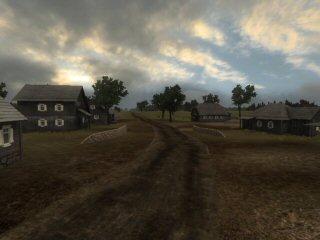 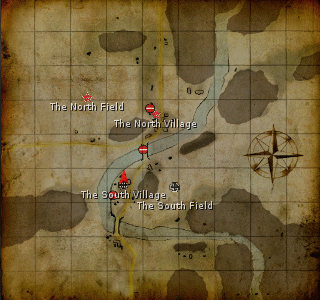 With the Romanians having staged a coup and then declared war on Germany on 25th August 1944, the Soviet forces had surged across Romania against limited resistance until they closed up on the Hungarian border. By the 29th August, the German Army Group Ukraine had collapsed as effectively as Army Group Centre, with the loss of the 6th Army (for the second time in the war). Having out-run their logistics, the Soviets paused in early September, collecting themselves forward on the Hungarian borders. The Soviet high command (Stavka) immediately laid plans to charge into Hungary and knock them, too, from the war. The first phase of this was to be the Debrecen operation, to clear the way into Hungary proper and the offensive was due to start in early October 1944. With the Romanians having staged a coup and then declared war on Germany on 25th August 1944, the Soviet forces had surged across Romania against limited resistance until they closed up on the Hungarian border. By the 29th August, the German Army Group Ukraine had collapsed as effectively as Army Group Centre, with the loss of the 6th Army (for the second time in the war). Having out-run their logistics, the Soviets paused in early September, collecting themselves forward on the Hungarian borders. The Soviet high command (Stavka) immediately laid plans to charge into Hungary and knock them, too, from the war. The first phase of this was to be the Debrecen operation, to clear the way into Hungary proper and the offensive was due to start in early October 1944. |
| Preparation for the battle | The battle itself |
| Prior to starting the Debrecen operation, the Soviets attempted to seize better start positions on the Hungarian border, north of the town of Arad. At the same time, some of the remaining German armoured forces tried to launch a spoiling attack towards Arad itself. While both moves were doomed to failure, in one of those peculiarities of war, both armoured forces found themselves with the enemy behind them and were forced to turn and fight back the way they had come. | During the 19th September, the German and Soviet forces have both turned back and are actually trying to secure the area so that they can then get back to advancing in the right direction, with their lines of communication intact. As they do so, they discover the enemy in their rear and both groups are forced to attack back towards their own main lines, around a small village in northwestern Romania. |
| 201.Panzer Regiment of 23.Panzer Division. Transferred hastily to the area after the collapse of Romania, this is a very tough and experienced German unit. |   Forces Forces | Task group of 18th Separate Tank Corps, formed from 110th Tank Brigade with some IS2s of 36th Guards Heavy Tank Regiment attached. This is one of the famous Soviet units that had halted the SS Panzer Corps at Kursk in July 1943 - at great cost. |
| A Soviet armoured force, including IS-2 heavy tanks, is behind us. Secure the area by moving to the north and taking control of the northern village and the surrounding fields. We also have Tigers in support, plus artillery. |   Briefing Briefing | German armour is operating behind us. Secure the area as quickly as possible. They appear to have heavy tanks attached, as do we. We also have artillery on call. |
|
| Baksan Valley |
Baksan: Caucasus Mountains, 10th November 1942
|
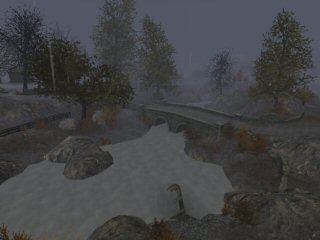 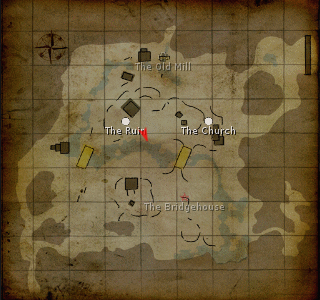 In the summer of 1942, the Germans had surged across the Ukraine and southern Russia, in a fashion reminiscent of the early drive of Operation Barbarossa in 1941. At one famous point, this had brought them to the banks of the Volga. After the drive across the Southern Steppes to the Volga, Hitler had turned 1st Panzer Army south from Stalingrad, with 17th Army on its right flank - and thin air on its left. The target was the Caucasian oil fields at Maikop and Grozny. Maikop was taken in a typical charge across the open Steppes. However, to get to Grozny the Germans had to penetrate deep into the Kaukasus Mountains, along the Terek River that becomes the Baksan in its upper reaches. In the summer of 1942, the Germans had surged across the Ukraine and southern Russia, in a fashion reminiscent of the early drive of Operation Barbarossa in 1941. At one famous point, this had brought them to the banks of the Volga. After the drive across the Southern Steppes to the Volga, Hitler had turned 1st Panzer Army south from Stalingrad, with 17th Army on its right flank - and thin air on its left. The target was the Caucasian oil fields at Maikop and Grozny. Maikop was taken in a typical charge across the open Steppes. However, to get to Grozny the Germans had to penetrate deep into the Kaukasus Mountains, along the Terek River that becomes the Baksan in its upper reaches.
|
| Preparation for the battle | The battle itself |
In another drive towards Grozny, the Germans try to penetrate further into the mountains, aiming for the town of Ordzhonikidze. The operation started in early October from the banks of the Baksan River, east of Nalchik and penetrated deep along the main road into the mountains. On the German right flank, west of Nalchik, the Soviets keep up intense pressure along the Baksan River, where it turns south, behind the mighty Mt Elbrus.
| As the winter snows start, the Soviets are applying even more pressure along the river line. Here, German troops from 4.Gebirgsjaeger (Mountain) Division, supporting 1. Gebirgsjager, move forward to hold a small valley along the river banks, amongst old buildings and ruins.
|
13. Gebirgsjager Regiment of 4. Gebirgsjager Division. This is another experienced unit that has fought through the war, but is now badly under-strength.
|   Forces Forces | 392 Rifle Division of 37th Army. This is a division raised in the Caucasus itself, in Georgia - Stalin's home country.
|
The Soviets are attempting to seize control of this valley and prevent us moving forward. Take the area and eliminate the threat.
|   Briefing Briefing | We are attempting to move forward across the river at this point. There are German mountain troops defending - destroy them and clear the area. |
|
| Barashka |
| Barashka: Hungary, 25th January 1945 |
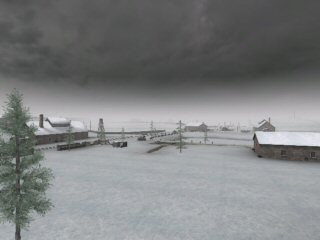 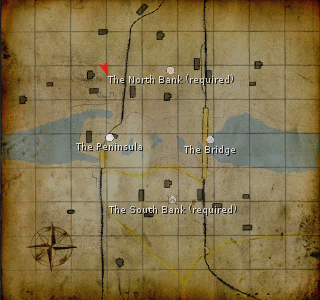 During the winter of 1944-45, the Soviets once again refused to allow the terrible eastern winters to slow them up. They attacked at various points along the front and, by Christmas 1944, had punched through to the Hungarian capital of Budapest. Hitler was determined to keep the Hungarians in the war following the separate peace made by the Romanians in 1944. To this end, he had ordered that Budapest be held at all costs. With a number of German units surrounded in Budapest - and Hitler refusing, once again, to allow a breakout, the scene was set for another catastrophe. However, the Germans decided to try and break in to free the defenders and re-take the city. They assembled a powerful strike-force, including 4 Wehrmacht and 3 SS Panzer Divisions, lunging forwards in a surprise attack on 26th December 1944. Failing to break through that way, IV SS Panzer Corps was disengaged, quickly shifted south and attacked from the southwest a few days later. They punched through the initial Soviet defences but were brought up short by defences along the Buda River. During the winter of 1944-45, the Soviets once again refused to allow the terrible eastern winters to slow them up. They attacked at various points along the front and, by Christmas 1944, had punched through to the Hungarian capital of Budapest. Hitler was determined to keep the Hungarians in the war following the separate peace made by the Romanians in 1944. To this end, he had ordered that Budapest be held at all costs. With a number of German units surrounded in Budapest - and Hitler refusing, once again, to allow a breakout, the scene was set for another catastrophe. However, the Germans decided to try and break in to free the defenders and re-take the city. They assembled a powerful strike-force, including 4 Wehrmacht and 3 SS Panzer Divisions, lunging forwards in a surprise attack on 26th December 1944. Failing to break through that way, IV SS Panzer Corps was disengaged, quickly shifted south and attacked from the southwest a few days later. They punched through the initial Soviet defences but were brought up short by defences along the Buda River. |
| Preparation for the battle | The battle itself |
| The initial German attack had been partially successful. With the SS divisions switched to the southern flank of the offensive, they tried again late in January. By this time the Soviets had moved fresh forces into the area between Lake Balaton and the city of Budapest. The SS Panzer Divisions were searching for ways across the main rivers. One such key crossing was the twin railway and road bridges at the small village of Barashka. 5th SS Panzer Division "Wiking" was ordered to charge for the village, seize the area and hold it, so that the whole Panzer Corps could continue the drive forward. However, the Soviets had now brought up fresh armoured units from their reserves. Soviet 23rd Tank Corps had been given orders to secure the same river crossings in order to facilitate a planned counter-attack. | On 25th January, 5th SS Panzer Division "Wiking", on the right flank of the German drive, attempted to punch across the river at a rail and road crossing north of the small village of Barashka. They ran straight into the Soviet 23rd Tank Corps, brought up as fresh reinforcements and a sharp meeting engagement ensued as both sides fought for a bridgehead across the river. The forces were both well equipped, including a number of heavy tanks, plus some supporting infantry. |
| 5th SS Panzer Division "Wiking", with 5th SS Panzer Regiment leading. A battle-hardened unit, made up of a mixed bag of volunteers including Dutch, Flemish, Volks-Deutsche from the Balkans and some Germans. |   Forces Forces | 23rd Tank Corps, with 135th Tank Brigade leading. This was also a veteran unit, being ultimately derived from one of the pre-war Soviet tank divisions. However, it had taken heavy casualties over the years fighting the Germans and had recently been rebuilt and re-equipped. |
Move forward rapidly, securing the south bank of the river, then the bridges over the peninsula and the railway bridge. With these objectives taken, push across and take the north bank. We have support from some Tigers from the heavy tank company, plus artillery on call.
|   Briefing Briefing | In order to clear the way for a counter-attack, take the north bank and the two river crossings, preventing the Germans from capturing them. With those objectives secure, advance to the south bank of the river, take and hold it. We have direct support from the IS-2s of a separate heavy tank battalion, as well as artillery on call. |
|
| Basovka |
| Basovka: L'vov, 2nd July 1941 |
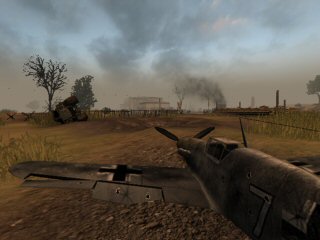 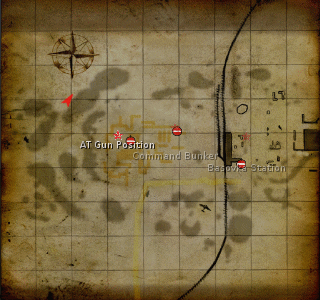 The initial onslaught of Operation Barbarossa in June 1941 had caught the Soviet Red Army woefully unprepared. Within days the German armoured forces had driven straight through the Soviet defences and were already as much as 250 kilometres behind the lines within a week. In some places, the troops continued to fight while, in others, the defences simply collapsed. Often this was simply due to the dismal supply situation for the Soviets, who only had supplies of food, fuel and ammunition in the front lines for 2-3 days combat. Where they could, they fought hard, even suicidally, but the Germans still rounded up hundreds of thousands of prisoners and started to march them west into captivity. The initial onslaught of Operation Barbarossa in June 1941 had caught the Soviet Red Army woefully unprepared. Within days the German armoured forces had driven straight through the Soviet defences and were already as much as 250 kilometres behind the lines within a week. In some places, the troops continued to fight while, in others, the defences simply collapsed. Often this was simply due to the dismal supply situation for the Soviets, who only had supplies of food, fuel and ammunition in the front lines for 2-3 days combat. Where they could, they fought hard, even suicidally, but the Germans still rounded up hundreds of thousands of prisoners and started to march them west into captivity. |
| Preparation for the battle | The battle itself |
| In the Ukraine, the Germans had paused momentarily before resuming the drive towards Kiev. The German forces (17th Army) were predominantly infantry, so had not kept up the same pace as 1st Panzergruppe, on their left flank. Contrary to popular belief, the vast bulk of the Wehrmacht was not motorised, so these troops had spent the first weeks of the war on forced marches, with all their kit following on as best as possible. The infantry columns had become badly strung out. By 2nd July, the Germans had re-grouped and resumed the attack eastwards. However, the Soviets have had a few days to prepare the defences. | On the morning of 2nd July, the German 17th Army attacked again, after softening the Soviet defences with artillery. One objective is to break the Soviet line at Basovka, a small Ukrainian town and railway halt. This was held by the 97th Rifle Division that had fallen back from the initial German attacks. It has only survived because the German armour has already bypassed it to the north. By now, the Soviets had time to construct better defences, digging in quickly and preparing themselves for the next German attack. With time to prepare themselves, the Soviets could give a good account of themselves in a square fight. |
| 68.Infanterie Division of 17th Army. This is a division raised in 1939 from reservists that took part in the fighting in Poland and France, making them an experienced infantry unit. |   Forces Forces | 97th Rifle Division of 6 Rifle Corps, Kiev Special Military District. The division is near full strength, although badly lacking in transport, making it well equipped by Red Army standards at the time. The division was first raised before 1929 and had a high proportion of professional soldiers. Although inexperienced, the unit has good training and morale. |
| Take the key points in the Soviet defence system here, break through and open the way for the full advance to continue. Break into the trenches, clear them and then advance to take the Station beyond. |   Briefing Briefing | Hold the line here. There will be no retreat. |
|
| Bondarevo |
| Bondarevo: Western Russia, 8th July 1942 |
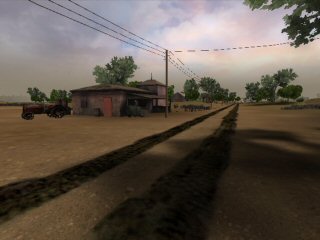 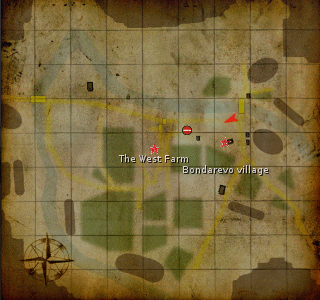 In the second summer of the war, the Germans once again have planned massive offensives. This time, after the failure of Operation Barbarossa the previous winter, they have limited their attacks to key areas. In the north, the German forces have been ordered to take Leningrad - a battle the Germans will never win. The central areas remain relatively quiet, while the Germans move to finally clear the Crimea. And in western Russia, the main offensive for the summer kicked off. Once again the Germans plunge forward, with the panzers leading and the infantry following up on foot. At first the aim is to cut Russia in two by breaking through to the Volga at Stalingrad. This is to be followed by a swing to the south, deep into the Caucasus, to take the southern oilfields. In the second summer of the war, the Germans once again have planned massive offensives. This time, after the failure of Operation Barbarossa the previous winter, they have limited their attacks to key areas. In the north, the German forces have been ordered to take Leningrad - a battle the Germans will never win. The central areas remain relatively quiet, while the Germans move to finally clear the Crimea. And in western Russia, the main offensive for the summer kicked off. Once again the Germans plunge forward, with the panzers leading and the infantry following up on foot. At first the aim is to cut Russia in two by breaking through to the Volga at Stalingrad. This is to be followed by a swing to the south, deep into the Caucasus, to take the southern oilfields. |
| Preparation for the battle | The battle itself |
| The German summer offensive is in full swing and, because of the successes gained over the last few weeks, XXX Panzer Corps is detached from the German 6th Army and ordered to drive south, ahead of the infantry, to link up with 1st Panzer Army and head for the Caucasian oilfields. They have been told to expect light resistance, as the Soviets in this area seem to be in full retreat. At the same time, the Soviet 22nd Tank Corps, which had not yet been engaged, having been in reserve behind 28th and 56th Armies, has been ordered to make a fighting withdrawal, clearing the path for the retreating Soviet armies. The two clash unexpectedly in the grain fields outside the village of Bondarevo. | Early on the 8th July 1942, lead elements of the German 3rd Panzer Division and the Soviet 22nd Tank Corps run headlong into each other outside the village of Bondarevo. The Germans have mostly old equipment at this point and suddenly find themselves facing a mix of Soviet armour, including light, medium and heavy tanks. A brisk meeting engagement ensues.
|
| The lead elements of 6.Panzer Regiment of 3.Panzer Division, reinforced with some StuG IIIs from the anti-tank battalion. At near-full strength and a veteran unit, having fought in all the major campaigns to date. |   Forces Forces | Lead elements of 13th Tank Brigade (Recon, armour and motorised infantry) of 22nd Tank Corps. The unit was only formed in April 1942, but has already seen hard fighting near Kharkov, so is somewhat below strength but ready for a fight. |
Retreating Soviet armoured elements have been spotted ahead. Engage and destroy the enemy armour and secure the small farm and village ahead to ensure the enemy cannot interfere with the division's movement.
|   Briefing Briefing | Our movement east is being threatened by German armour moving south. Engage the enemy armour, destroying as much as possible, while creating time for the rest of the Corps to move clear. |
|
| HedgeHog |
| "Hedgehog": Ukraine, 28th June 1944 |
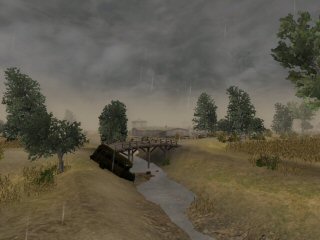 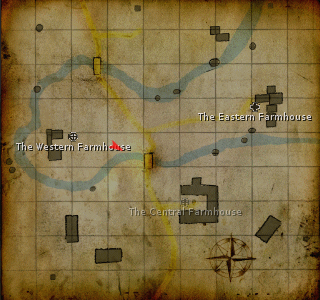 During June 1944, Stalin quietly sat back and waited, his vast armies conveniently paused, while the Western Allies finally launched the second front over the beaches of Normandy. To the Soviets, this was long overdue. They felt their partners in the west were waiting for them to weaken the Germans. It is also alleged that Stalin allowed overtures of peace from the Germans, momentarily enjoying the thought that the Germans would turn and maul the American and Commonwealth troops - or be mauled. In either case, this would allow the Soviets to rest before tearing into the Germans once more. However, in late June 1994, the Soviets launched Operation Bagration to destroy the German Army Group Centre in Belorussia, north of the Pripyat Marshes, around Mogilev, Minsk and Vitebsk. The operation was well planned and well executed, with the Germans being heavily over-matched. Within a few weeks, Army Group Centre had disintegrated and the Germans had lost 450,000 men - far more than they lost at Stalingrad. It was also far more than the Germans lost in the entire Normandy campaign. During June 1944, Stalin quietly sat back and waited, his vast armies conveniently paused, while the Western Allies finally launched the second front over the beaches of Normandy. To the Soviets, this was long overdue. They felt their partners in the west were waiting for them to weaken the Germans. It is also alleged that Stalin allowed overtures of peace from the Germans, momentarily enjoying the thought that the Germans would turn and maul the American and Commonwealth troops - or be mauled. In either case, this would allow the Soviets to rest before tearing into the Germans once more. However, in late June 1994, the Soviets launched Operation Bagration to destroy the German Army Group Centre in Belorussia, north of the Pripyat Marshes, around Mogilev, Minsk and Vitebsk. The operation was well planned and well executed, with the Germans being heavily over-matched. Within a few weeks, Army Group Centre had disintegrated and the Germans had lost 450,000 men - far more than they lost at Stalingrad. It was also far more than the Germans lost in the entire Normandy campaign. |
| Preparation for the battle | The battle itself |
| As the German front fell apart, many units stood, others retreated in good order and still others collapsed and fled. Many of them were already well too late to retreat, as the Soviets were behind them. | In this instance, a retreating German unit has to fight for its survival around some small Belorussian farms. The Germans have paused briefly, possibly considering a rearguard action, but have rapidly been caught by the fast-charging Soviet advance guard. The Germans are trapped in one of their "Hedgehog" positions, with Soviet troops all around. They need to try and hold on as long as possible, before breaking out.
|
| Another German Kampfgruppe formed from retreating remnants of 18th Panzergrenadier Division. Having paused, they have both armour and artillery support. |   Forces Forces | 3rd Guards Mechanised Corps, a rifle battalion of 8th Guards Mechanised Brigade leading.
|
There are Soviet forces all around; we need to hold this area long enough to regroup our forces and fight through to the West. Hold on to as many of the Objectives as possible. You have artillery on call to assist.
|   Briefing Briefing | We have caught up with another fleeing fasheestkoye unit; surround it, take the area and annihilate the enemy. Take all three Objectives. |
|
| Kaukasus |
| Kaukasus: Caucasus Mountains, 14th October 1942 |
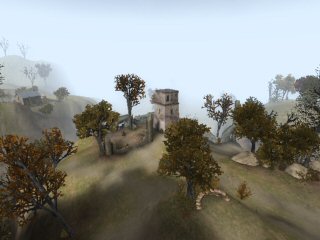 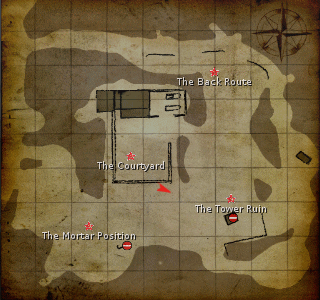 In the summer of 1942, the Germans had surged across the Ukraine and southern Russia, in a fashion reminiscent of the early drive of Operation Barbarossa in 1941. At one famous point, this had brought them to the banks of the Volga. After the drive across the Southern Steppes to the Volga, Hitler had turned 1st Panzer Army south from Stalingrad, with 17th Army on its right flank - and thin air on its left. The target was the Caucasian oil fields at Maikop and Grozny. Maikop was taken in a typical charge across the open Steppes. However, to get to Grozny the Germans had to penetrate deep into the Kaukasus Mountains, along the Terek River. In the summer of 1942, the Germans had surged across the Ukraine and southern Russia, in a fashion reminiscent of the early drive of Operation Barbarossa in 1941. At one famous point, this had brought them to the banks of the Volga. After the drive across the Southern Steppes to the Volga, Hitler had turned 1st Panzer Army south from Stalingrad, with 17th Army on its right flank - and thin air on its left. The target was the Caucasian oil fields at Maikop and Grozny. Maikop was taken in a typical charge across the open Steppes. However, to get to Grozny the Germans had to penetrate deep into the Kaukasus Mountains, along the Terek River.
|
| Preparation for the battle | The battle itself |
| In another drive towards Grozny, the Germans try to penetrate further into the mountains, aiming for the town of Ordzhonikidze. This involved the Germans fighting their way up through the passes and, in the classic words "taking the high ground". They wanted to break through the mountains before the winter set in. Fortunately, this far south, winter set in late. The Caucasus Mountains are very high, but in a relatively warm climate. It was still only Fall when the Germans pushed forward again. Here, however, the Wehrmacht could not bring its supremacy in armoured tactics to bear: it would be forced to fight on the Soviet's terms, on ground that the Soviet forces knew well. | On this occasion, the German mountain troops pushing along one of the rough roads leading into the mountains have found the road overlooked by a strong Soviet position, based around an old monastery. This was set high up above the road, away from the distractions of the world. Here, of course, this provided a perfect base for a small contingent of Soviet troops to watch the road and ensure that nothing passed. The Germans had no choice but to fight their way upwards and clear the monastery and surrounding area.
|
Troops of 54. Aufklärungsabteilung of 1 Gebirgs (Mountain) Division. The unit had actually been formed of Austrian mountain specialists in the summer of 1939. The attacking unit is the divisional recon battalion.
|   Forces Forces | Elements of 9th Mountain Rifle Division, of 3rd Mountain Rifle Corps. This was actually one of the senior units of the Red Army, having been formed originally as the "Kursk" Infantry Division on 11th October 1918. It was a long-standing and solid unit, some elements having taken part in the Kerch landings the previous winter.
|
There are Soviet forces on the heights above, based in an old monastery. There are two routes to it, so both must be taken and the heights cleared of Soviet troops, so that we can keep the road along the valley clear from interference.
|   Briefing Briefing | The position here must be held against all German attacks. We have a very strong defensive position, although we do have two separate routes to defend. If any positions are taken, they should be counter-attacked and retaken immediately. |
|
| Königsplatz |
| Königsplatz: Berlin, 30th April 1945 |
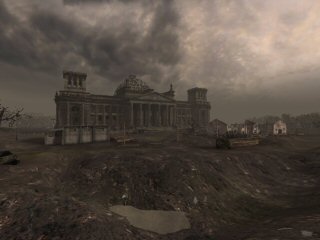 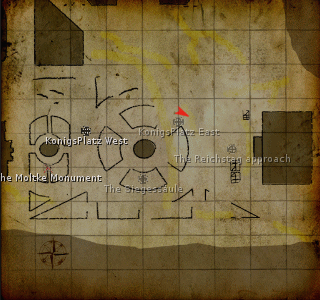 By the last day of April 1945, Berlin was in ruins and the Red Army had taken possession of all but the last few pockets of resistance. After 5 years of steady bombing by the British and Americans, the city had to suffer a final battering from an incredible 20,000 Soviet artillery pieces. Many of these were dragged forward and used to demolish any building where even the slightest signs of resistance were shown. The Soviets were close to the finish now and were in no mood to be delicate. Any semblance of military order in the Wehrmacht had disintegrated in these last days and small, ad-hoc, units were all that remained to defend the last few landmarks. For the Soviets, the ultimate symbol of Fascist aggression had always been the Reichstag: Zhukov's intention was to take it in time for May Day — 1st May 1945. By the last day of April 1945, Berlin was in ruins and the Red Army had taken possession of all but the last few pockets of resistance. After 5 years of steady bombing by the British and Americans, the city had to suffer a final battering from an incredible 20,000 Soviet artillery pieces. Many of these were dragged forward and used to demolish any building where even the slightest signs of resistance were shown. The Soviets were close to the finish now and were in no mood to be delicate. Any semblance of military order in the Wehrmacht had disintegrated in these last days and small, ad-hoc, units were all that remained to defend the last few landmarks. For the Soviets, the ultimate symbol of Fascist aggression had always been the Reichstag: Zhukov's intention was to take it in time for May Day — 1st May 1945.
|
| Preparation for the battle | The battle itself |
At dawn on 30th April, elements of the Soviet 756th Rifle Regiment started out to clear a path through the final few hundred metres across the Königsplatz to the Reichstag, in preparation for the final assault. The assault battalions were commanded by Captain SA Neustroyev; as soon as they launched into the attack, they met ferocious fire from ahead and each flank as the remaining German units attempted to hold them off. The Soviets had to waste further time clearing the heavily damaged Kroll Opera House to the west and the Interior Ministry to the north. With those taken, they were finally in position to launch into the Königsplatz.
| As the Soviet assault forces gathered by the Kroll Opera, they could see the Reichstag through the smoke on the far side of the Königsplatz, off to the east. They had intermittent tank support as some of their armour made it across the Moltke Bridge and joined them by the Interior Ministry to the north. The Königsplatz, once beautiful parkland with rows of triumphal statues, was a ruin — hell on earth. The parkland had been bombed and shelled to oblivion, with the statues and columns destroyed. A tunnel dug as part of Hitler's grand plan for the "new Berlin" had collapsed, partially filling with water and creating an impromptu anti-tank ditch. The Reichstag was already ruined and bricked up from the fire in 1938 and the construction offices and buildings in front of it were partially demolished and now fortified. As the Soviets advanced into the Königsplatz, they found German defenders in every hole and corner. These were the last, desperate defenders of Germany and they knew they had no choice but to hold off the Soviets — or die trying. There was nowhere else left to retreat to. As they advanced, the Soviets found that the Germans also had the last few Tiger tanks left in Berlin to support them. The Soviets responded by calling in every artillery tube they could muster, supporting every surge forward with another artillery barrage. It took the Soviets a full 6 hours to finish clearing the Königsplatz so that they could finally break into the Reichstag itself.
|
The last Axis troops, part of "Kampfgruppe Babick", under SS-
\nObersturmführer Babick. The backbone of this little force was made up of Waffen-SS volunteers from 2 of the SS armoured divisions. They were supported by a mix of Naval Infantry and clerks, holed up inside the Reichstag itself. The final few Tiger tanks from these SS divisions did what they could to stem the Soviet tide. |   Forces Forces | Neustroyev's battalion of Komsomol members from the 756th Rifle Regiment of 150th Rifle Division. These men were all volunteers — Communist party stalwarts — all vying for the opportunity to be in at the finish as the "Hitlerite invaders" were finally crushed.
|
Prevent the Soviets from reaching the Reichstag at all costs. Beat them back to buy time for us to bring up reinforcements! We have support from a few Tigers and plenty of Panzerfausts to destroy the enemy armour with. The Soviets are attacking from the far side of the square and will try to clear a series of objectives straight through to the Reichstag. These must be held.
|   Briefing Briefing | Clear the approaches to the Reichstag in preparation for the final assault to be made on the building itself. This must be completed as quickly as possible, as Comrade Stalin has been promised that we will raise the Red Banner on top of the Reichstag in time for the May Day celebrations tomorrow. We start our assault from the Kroll Opera, with tank support coming in from our left. Protect these tanks from German infantry, as their guns will help us take the objectives. We also have plenty of artillery available, so use it to force the enemy back. We must clear a path through the middle of the square, so the objectives are simply a sequence of locations along that path. Take each one in turn, ensuring that the Germans do not infiltrate and take any back, until you have cleared the steps to the Reichstag itself. |
|
| Krasnyi Oktyabr' |
| Krasnyi Oktyabr': Stalingrad, 29th September 1942 |
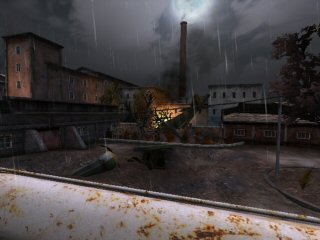 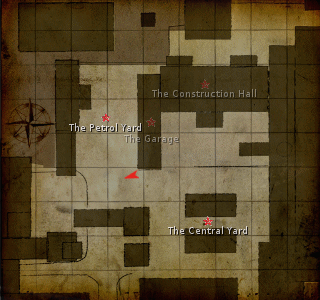 The German drive to the Volga brought 6th Army to Stalingrad -mostly on foot - by August 1942. During August and into September, they drove steadily through the city, assisted by constant pounding from the Luftwaffe, pushing the Soviet 62nd Army ever backwards. To the north of the city stood the huge factory district, consisting of (from North to South) the Dzerzhinsky Tractor Factory (manufacturing T-34s), the Barrikady Gun Factory, the Krasnyi Oktyabr' Steelworks and the Lazur Chemical works. While units to the south fought their way metre-by-metre through the city itself, the Soviets hung on grimly to the factories. The German drive to the Volga brought 6th Army to Stalingrad -mostly on foot - by August 1942. During August and into September, they drove steadily through the city, assisted by constant pounding from the Luftwaffe, pushing the Soviet 62nd Army ever backwards. To the north of the city stood the huge factory district, consisting of (from North to South) the Dzerzhinsky Tractor Factory (manufacturing T-34s), the Barrikady Gun Factory, the Krasnyi Oktyabr' Steelworks and the Lazur Chemical works. While units to the south fought their way metre-by-metre through the city itself, the Soviets hung on grimly to the factories. |
| Preparation for the battle | The battle itself |
| In the last week of September 1942, the Germans launched yet another attempt to dislodge the Soviets from the factory district. On the 29th September, the Germans launch a full-scale assault on the Krasnyi Oktyabr' plant, aiming for nothing less than clearing it completely. The Soviet positions in the factory, initially held by militia raised from the factory workers, had been reinforced by the 308th Rifle Division, brought across the Volga river in ferries a couple of nights earlier. These troops were now well dug in, but had been greeted by continual bombing from the Luftwaffe in an effort to soften up the Soviet defences. Instead of taking the 3 days planned, the Germans wound up embroiled in a desperate fight for the factory, room by room, for months to come. | The Soviet militia had managed to hang on to most of their steelworks against the German assaults. However, both sides had taken a heavy beating and now both had brought up relatively fresh units. The German troops were expecting nothing more than well-beaten militia forces and launching an attack into the teeth of well-armed and well-motivated troops from Siberia came as a nasty shock.
|
54th Infantry Regiment of 100th Jäger Division. This was actually a division that had only been raised in July 1942 as a "light" division. Bizarrely, they were supported by 3 supply columns of Turkish troops.
|   Forces Forces | 308 Rifle Division of 62nd Army. This was a unit that had been raised in Omsk, Siberia, in the spring of 1942. The troops were mostly volunteers from the NKVD camps in Siberia. As such, many of them had previous military experience. They were keen to show their mettle, so that they and their families would be allowed to return from Siberia - if they lived! |
| work your way into the Red October plant and clear the remaining Soviet defenders from it. |   Briefing Briefing | The Germans are attempting to break through to the banks of the Volga and prevent any further reinforcements getting through. The factory must be held at all costs. Follow Comrade Stalin's order - "not one step back"! |
|
| Lyes Krovy |
| The “Bloody Forest”, Pskov, 28th July 1944 |
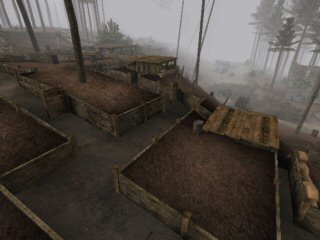 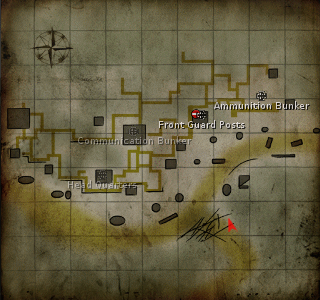 The “Bloody Forest”, Pskov, 28th July 1944||As Army Group Centre was destroyed to the south, the battered German forces further north had dug in once more, preparing to face the inevitable Soviet onslaught driving towards the Baltic. On 23rd July 1944 the Soviet Leningrad Front and 3rd Pre-Baltic Front hurled their armies forwards and drove straight through the frail German defences. As the front line shattered, the Germans tried to hold on wherever they could. The “Bloody Forest”, Pskov, 28th July 1944||As Army Group Centre was destroyed to the south, the battered German forces further north had dug in once more, preparing to face the inevitable Soviet onslaught driving towards the Baltic. On 23rd July 1944 the Soviet Leningrad Front and 3rd Pre-Baltic Front hurled their armies forwards and drove straight through the frail German defences. As the front line shattered, the Germans tried to hold on wherever they could. |
| Preparation for the battle | The battle itself |
| |
| 209 SicherungsAbteilung was a rear-area security unit, comfortably dug deep into a Soviet hillside, with the mission to protect the Rollbahn in front of the position and to maintain communications along the road. However, they must suddenly become front-line fighters, as the Soviet offensive roars straight at them. |   Forces Forces | 24 Rifle Division was a heavily-decorated Soviet unit. The Scout Company are used to moving quickly and, when necessary, taking enemy positions by surprise and storming them. They are primarily equipped with automatic weapons and can therefore bring considerable fire-power to bear. |
| There are 5 Objectives to hold through the trench system. The Soviets will start by hitting the left flank or the centre of the position. If you can move quickly enough you stand a chance of keeping the Soviets completely out of the trenches. Once they break in, it will become bitter close-quarters fighting. Keep an eye on the final Objectives and be prepared to move fast to protect them. |   Briefing Briefing | There are a total of 4 Objectives to be taken. You will need to start by hitting the right flank or centre of the position in order to break into the trenches. Once in the trenches, expect bitter fighting. Once Objectives are taken, make sure the enemy do not sneak back behind you and retake them! |
|
| Odessa |
| Odessa: Black Sea Coast, 10th April 1944 |
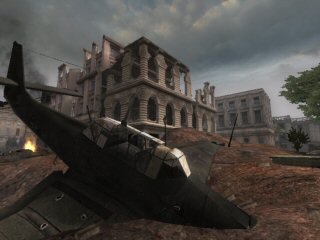 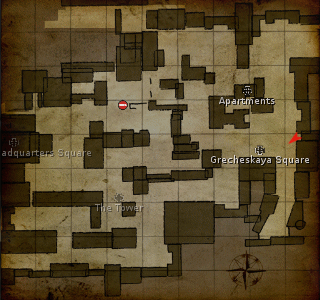 In the spring of 1944, the Soviet offensives in the Ukraine continued unabated, without the traditional pause for the early "rasputsitsa" or "muddy period. While the offensives further north slowed, in the south they continued with only brief pauses to allow the ever-lengthening logistics tails to catch up with the armoured spearheads. The Soviet aim now was to finish clearing Soviet territory in the Ukraine, remove the last Germans from the Crimea and close up to the Romanian border on the Dniester River. At the beginning of March 1st Ukrainian Front attacked again and, by the 24th, had cut off the battered German 1st Panzer Army. 2nd and 3rd Ukrainian Fronts followed suit, just as successfully. After a pause, 3rd Ukrainian Front charged past Odessa, leaving the defenders cut off and desperately hoping for rescue from the sea. In the spring of 1944, the Soviet offensives in the Ukraine continued unabated, without the traditional pause for the early "rasputsitsa" or "muddy period. While the offensives further north slowed, in the south they continued with only brief pauses to allow the ever-lengthening logistics tails to catch up with the armoured spearheads. The Soviet aim now was to finish clearing Soviet territory in the Ukraine, remove the last Germans from the Crimea and close up to the Romanian border on the Dniester River. At the beginning of March 1st Ukrainian Front attacked again and, by the 24th, had cut off the battered German 1st Panzer Army. 2nd and 3rd Ukrainian Fronts followed suit, just as successfully. After a pause, 3rd Ukrainian Front charged past Odessa, leaving the defenders cut off and desperately hoping for rescue from the sea.
|
| Preparation for the battle | The battle itself |
| As the German 6th Army tried to halt and form a defensive line around Odessa, the Soviets once more brushed them aside and 6th Army retreated clear to the Dniester River, leaving the garrison of Odessa to its own devices. The forces in the city itself were effectively abandoned and had to hope they could hold off the Soviets long enough. In the event, the Soviets left the city alone for a few days and finally sent a Rifle Division in to clear the rest of the city. | On 9th April, in sudden clear weather, the Soviets push into the city, unsure whether they will meet any resistance. The last remaining German troops are a small security detachment, left behind in the retreat, that now has to face the Red Army in force. Their only hope is to hold onto the area around their headquarters, a mere 250 metres from the sea front.
|
| 550.Sicherungsabteilung. This is a small security detachment, used to policing the rear areas for 6th Army and handling encounters with partisans, rather than the full weight of the Red Army. |   Forces Forces | 61 Rifle Division of 28th Army. This unit was originally raised in Armenia and fought hard through the Caucasus and across southern Ukraine. In April 1944, it was in reserve when it was diverted to clear the city. |
The main Soviet forces are attempting to clear the city. We must hold the area until we can be evacuated by sea!
|   Briefing Briefing | Clear the city centre, through to the sea front. |
|
| Ogledow |
| Ogledow: Poland, 12th August 1944 |
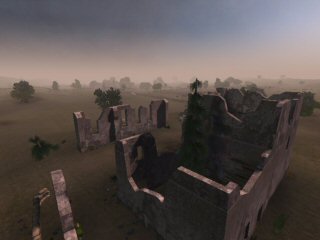 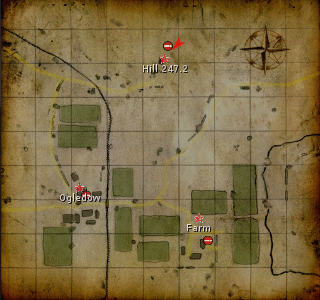 Following on from the destruction of the German Army Group Centre during June 1944, the Soviets kept the Offensives rolling all up and down the front. In a drive out of the Ukraine and across southern Poland, the Soviets launched the L'vov-Sandomierz Operation. This was an armour-heavy assault, intended to move the Soviets out of the Ukraine and all the way to the pre-war orders of Czechoslovakia and Germany itself. 1st Ukrainian Front threw 1st and 3rd Guards Tank Armies and 4th Tank Army into the line and broke the Germans once more. Following on from the destruction of the German Army Group Centre during June 1944, the Soviets kept the Offensives rolling all up and down the front. In a drive out of the Ukraine and across southern Poland, the Soviets launched the L'vov-Sandomierz Operation. This was an armour-heavy assault, intended to move the Soviets out of the Ukraine and all the way to the pre-war orders of Czechoslovakia and Germany itself. 1st Ukrainian Front threw 1st and 3rd Guards Tank Armies and 4th Tank Army into the line and broke the Germans once more. |
| Preparation for the battle | The battle itself |
| The German 1st and 4th Panzer Armies tried to halt the blow, but ended up repeatedly cut off and surrounded by the advancing Soviets. Each time they managed to break free, but at great loss to themselves in men and materiel. By the second week of August the Germans were nearing exhaustion and in dire need of help. | On 12th August, 16.Panzer Division, having been pulled out of a refit, is thrust into the line, ordered to counter-attack the Soviet spearheads and slow their advance. They ran into the advancing Soviets near the small Polish village of Ogledow. |
| 16.Panzer Division. This was not a lucky unit: it was first destroyed at Stalingrad, then rebuilt and sent to Italy, where it was almost destroyed again. It suffered heavy losses at Kiev in 1943 and then at Cherkassy. By now, the division has been re-equipped yet again and has been pushed forward to try and stem the onrushing Soviet armour. |   Forces Forces | 53 Guards Tank Brigade of 6 Guards Tank Corps. The tank brigade had fought a long war and was an experienced unit. On this occasion they are supported by 71 Guards Heavy Tank Regiment. This is a newer unit, operating in direct support of 6 Guards Tank Corps. |
The Soviets are advancing past Ogledow - intercept and stop them.
\nSoviet briefing: A small German armoured unit has been detected in our path. Destroy it and continue the advance. |   Briefing Briefing | A small German armoured unit has been detected in our path. Destroy it and continue the advance. |
|
| Rakowice |
| Rakowice Airfield: Krakow, 25th January 1945 |
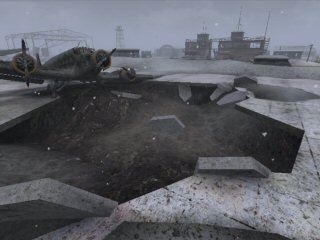 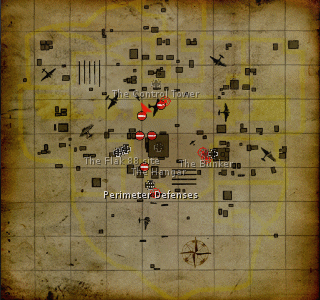 At the start of the year, the Soviets kicked off the Visla operation with 4th Ukrainian Front leading in the south, As the offensive rapidly gathered momentum 1st Ukrainian and then the 1st and 2nd Byelorussian Fronts joined in. While the offensive drove most of the way to Berlin in the north, it pulled up shorter in the south, after storming through Poland and Slovakia. The winter of 1944-45 was one of the hardest in Europe that century, as famously noted by the Allies in the west, too. The Soviets only allowed the offensive to stall briefly in Poland, before bringing up yet more reinforcements to continue the onslaught. At the start of the year, the Soviets kicked off the Visla operation with 4th Ukrainian Front leading in the south, As the offensive rapidly gathered momentum 1st Ukrainian and then the 1st and 2nd Byelorussian Fronts joined in. While the offensive drove most of the way to Berlin in the north, it pulled up shorter in the south, after storming through Poland and Slovakia. The winter of 1944-45 was one of the hardest in Europe that century, as famously noted by the Allies in the west, too. The Soviets only allowed the offensive to stall briefly in Poland, before bringing up yet more reinforcements to continue the onslaught. |
| Preparation for the battle | The battle itself |
| As the Soviet offensive started off in earnest again in the third week of January, one of the many subsidiary objectives was Rakowice airfield, which had been the first purpose-built fighter base in the world, when created in 1910 in Poland. Taken over by the Germans in 1939, the airfield became a major transport base for the Luftwaffe covering the Ukraine. But now it was no longer a rear-area base: it was the front line. The German defenders already had defences prepared, ironically enough built by the Poles before the war. The Germans made use of them in an attempt to stop the Soviet steamroller once more. | The Soviet 38th Army drove the right flank of 4th Ukrainian Front forward, liaising with the left flank of 1st Ukrainian Front. With Krakow bypassed and surrounded, the Soviets pulled up between the city and Rakowice airfield to the southwest on the evening of 24th January 1945. The next morning, they resumed the drive west - but met armoured resistance briefly at Rakowice. With supporting armour of their own, a brief and violent combined arms clash took place over the field. |
| Kampfgruppe 78 Sturm. This is a battle group formed from the remains of the 78th Sturm Division (a heavily reinforced infantry division), under command of the fast-retreating 17th Army. |   Forces Forces | 241 Rifle Division, of 67 Rifle Corps, 38th Army, with armoured support. |
| Our job is to use the open ground of the airfield to hold the Soviet armour back as long as possible, from the prepared defensive positions. Ideally inflict major casualties and force them to retreat. |   Briefing Briefing | Move forward as rapidly as possible - German armour has been reported at the airfield ahead. Move up, engage the enemy and destroy them. Take the airfield and clear the way for the advance to continue! |
|
| Stalingrad Kessel |
| Stalingrad Kessel: Stalingrad, 26th December 1942 |
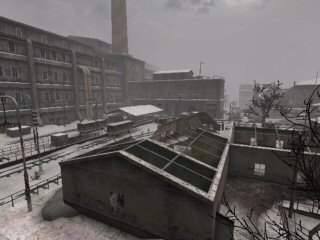 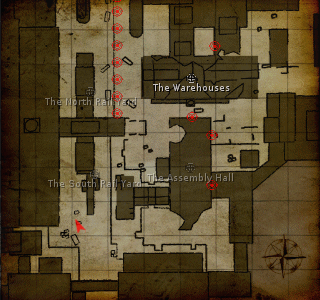 During the summer of 1942, the Germans had stormed to the banks of the Volga at Stalingrad. 6th Army had then had to fight its way into the city. In some areas, the Germans broke through to the river. The Soviets were divided into 2 or 3 pockets of resistance. One of these had been the factory district to the north of the city. But in each of these pockets, the Soviets hung on with grim determination, only retreating when the building was burning down around them. And then they would attack and take the ruins back again. With the Germans stalled in the city of Stalingrad, the Soviets had attacked to the north and south of the city and surrounded the whole of 6th Army in mid-November. A relief attempt was made by 4th Panzer Army, under Erich von Manstein, but this could not break in - and Hitler had forbidden 6th Army to breakout. The relief attempt stalled on 18th December, leaving the Soviets free to attack the Germans now forced to defend the ruins of Stalingrad. During the summer of 1942, the Germans had stormed to the banks of the Volga at Stalingrad. 6th Army had then had to fight its way into the city. In some areas, the Germans broke through to the river. The Soviets were divided into 2 or 3 pockets of resistance. One of these had been the factory district to the north of the city. But in each of these pockets, the Soviets hung on with grim determination, only retreating when the building was burning down around them. And then they would attack and take the ruins back again. With the Germans stalled in the city of Stalingrad, the Soviets had attacked to the north and south of the city and surrounded the whole of 6th Army in mid-November. A relief attempt was made by 4th Panzer Army, under Erich von Manstein, but this could not break in - and Hitler had forbidden 6th Army to breakout. The relief attempt stalled on 18th December, leaving the Soviets free to attack the Germans now forced to defend the ruins of Stalingrad. |
| Preparation for the battle | The battle itself |
| By late December, the German defenders of Stalingrad were heavily dug in, embattled, hungry and running short of everything. The weather had turned into another terrible Russian winter and the Germans were freezing to death. Now the Volga too was freezing over and the Russians would soon be able to bring reinforcements across the frozen river. In the factory district, the front lines ran through individual buildings and even across a workshop. The one-time defenders of the Red October ("Krasnyi Oktyabr") factory made a last push to try and dislodge the Germans now holding it. | The Germans held a portion of the Red October factory, some of which had been mostly demolished and was in ruins, while other areas, that the Germans had taken early in the fighting, were less damaged. Now, however, the Soviets attacked back, keen to regain the areas lost and to repay their German tormentors in blood. The fighting was particularly brutal as the Germans had nowhere to retreat to. They also knew that the Soviets attacking them were in no mood to take prisoners. |
| The remnants of 79.Infanterie Division. This was a pre-war reserve division that had fought through the French campaign and through Russia since 1941. Now reduced to the strength of a single regiment. |   Forces Forces | 62nd Army Battle-group "Krasnyi Oktyabr'" - a battle-group made up of survivors of 308 and 264 Rifle Divisions, from the earlier battles. These were the toughest men, those able to survive the appalling fighting that had taken place in the previous few weeks, as well as the vicious Russian winter. |
| the Soviets have 6th Army surrounded. It is the task of each unit to hold its area of the line, so that we may all hold on and be rescued. Hold the factory against all assaults! |   Briefing Briefing | Now we have a last chance to take revenge on the Hitlerites - grind those holed up in the factory to dust! One last battle before we are relieved! |
|

 With the Romanians having staged a coup and then declared war on Germany on 25th August 1944, the Soviet forces had surged across Romania against limited resistance until they closed up on the Hungarian border. By the 29th August, the German Army Group Ukraine had collapsed as effectively as Army Group Centre, with the loss of the 6th Army (for the second time in the war). Having out-run their logistics, the Soviets paused in early September, collecting themselves forward on the Hungarian borders. The Soviet high command (Stavka) immediately laid plans to charge into Hungary and knock them, too, from the war. The first phase of this was to be the Debrecen operation, to clear the way into Hungary proper and the offensive was due to start in early October 1944.
With the Romanians having staged a coup and then declared war on Germany on 25th August 1944, the Soviet forces had surged across Romania against limited resistance until they closed up on the Hungarian border. By the 29th August, the German Army Group Ukraine had collapsed as effectively as Army Group Centre, with the loss of the 6th Army (for the second time in the war). Having out-run their logistics, the Soviets paused in early September, collecting themselves forward on the Hungarian borders. The Soviet high command (Stavka) immediately laid plans to charge into Hungary and knock them, too, from the war. The first phase of this was to be the Debrecen operation, to clear the way into Hungary proper and the offensive was due to start in early October 1944.
 Forces
Forces
 Briefing
Briefing
 In the summer of 1942, the Germans had surged across the Ukraine and southern Russia, in a fashion reminiscent of the early drive of Operation Barbarossa in 1941. At one famous point, this had brought them to the banks of the Volga. After the drive across the Southern Steppes to the Volga, Hitler had turned 1st Panzer Army south from Stalingrad, with 17th Army on its right flank - and thin air on its left. The target was the Caucasian oil fields at Maikop and Grozny. Maikop was taken in a typical charge across the open Steppes. However, to get to Grozny the Germans had to penetrate deep into the Kaukasus Mountains, along the Terek River that becomes the Baksan in its upper reaches.
In the summer of 1942, the Germans had surged across the Ukraine and southern Russia, in a fashion reminiscent of the early drive of Operation Barbarossa in 1941. At one famous point, this had brought them to the banks of the Volga. After the drive across the Southern Steppes to the Volga, Hitler had turned 1st Panzer Army south from Stalingrad, with 17th Army on its right flank - and thin air on its left. The target was the Caucasian oil fields at Maikop and Grozny. Maikop was taken in a typical charge across the open Steppes. However, to get to Grozny the Germans had to penetrate deep into the Kaukasus Mountains, along the Terek River that becomes the Baksan in its upper reaches.
 Forces
Forces
 Briefing
Briefing
 During the winter of 1944-45, the Soviets once again refused to allow the terrible eastern winters to slow them up. They attacked at various points along the front and, by Christmas 1944, had punched through to the Hungarian capital of Budapest. Hitler was determined to keep the Hungarians in the war following the separate peace made by the Romanians in 1944. To this end, he had ordered that Budapest be held at all costs. With a number of German units surrounded in Budapest - and Hitler refusing, once again, to allow a breakout, the scene was set for another catastrophe. However, the Germans decided to try and break in to free the defenders and re-take the city. They assembled a powerful strike-force, including 4 Wehrmacht and 3 SS Panzer Divisions, lunging forwards in a surprise attack on 26th December 1944. Failing to break through that way, IV SS Panzer Corps was disengaged, quickly shifted south and attacked from the southwest a few days later. They punched through the initial Soviet defences but were brought up short by defences along the Buda River.
During the winter of 1944-45, the Soviets once again refused to allow the terrible eastern winters to slow them up. They attacked at various points along the front and, by Christmas 1944, had punched through to the Hungarian capital of Budapest. Hitler was determined to keep the Hungarians in the war following the separate peace made by the Romanians in 1944. To this end, he had ordered that Budapest be held at all costs. With a number of German units surrounded in Budapest - and Hitler refusing, once again, to allow a breakout, the scene was set for another catastrophe. However, the Germans decided to try and break in to free the defenders and re-take the city. They assembled a powerful strike-force, including 4 Wehrmacht and 3 SS Panzer Divisions, lunging forwards in a surprise attack on 26th December 1944. Failing to break through that way, IV SS Panzer Corps was disengaged, quickly shifted south and attacked from the southwest a few days later. They punched through the initial Soviet defences but were brought up short by defences along the Buda River.
 Forces
Forces
 Briefing
Briefing
 The initial onslaught of Operation Barbarossa in June 1941 had caught the Soviet Red Army woefully unprepared. Within days the German armoured forces had driven straight through the Soviet defences and were already as much as 250 kilometres behind the lines within a week. In some places, the troops continued to fight while, in others, the defences simply collapsed. Often this was simply due to the dismal supply situation for the Soviets, who only had supplies of food, fuel and ammunition in the front lines for 2-3 days combat. Where they could, they fought hard, even suicidally, but the Germans still rounded up hundreds of thousands of prisoners and started to march them west into captivity.
The initial onslaught of Operation Barbarossa in June 1941 had caught the Soviet Red Army woefully unprepared. Within days the German armoured forces had driven straight through the Soviet defences and were already as much as 250 kilometres behind the lines within a week. In some places, the troops continued to fight while, in others, the defences simply collapsed. Often this was simply due to the dismal supply situation for the Soviets, who only had supplies of food, fuel and ammunition in the front lines for 2-3 days combat. Where they could, they fought hard, even suicidally, but the Germans still rounded up hundreds of thousands of prisoners and started to march them west into captivity.
 Forces
Forces
 Briefing
Briefing
 In the second summer of the war, the Germans once again have planned massive offensives. This time, after the failure of Operation Barbarossa the previous winter, they have limited their attacks to key areas. In the north, the German forces have been ordered to take Leningrad - a battle the Germans will never win. The central areas remain relatively quiet, while the Germans move to finally clear the Crimea. And in western Russia, the main offensive for the summer kicked off. Once again the Germans plunge forward, with the panzers leading and the infantry following up on foot. At first the aim is to cut Russia in two by breaking through to the Volga at Stalingrad. This is to be followed by a swing to the south, deep into the Caucasus, to take the southern oilfields.
In the second summer of the war, the Germans once again have planned massive offensives. This time, after the failure of Operation Barbarossa the previous winter, they have limited their attacks to key areas. In the north, the German forces have been ordered to take Leningrad - a battle the Germans will never win. The central areas remain relatively quiet, while the Germans move to finally clear the Crimea. And in western Russia, the main offensive for the summer kicked off. Once again the Germans plunge forward, with the panzers leading and the infantry following up on foot. At first the aim is to cut Russia in two by breaking through to the Volga at Stalingrad. This is to be followed by a swing to the south, deep into the Caucasus, to take the southern oilfields.
 Forces
Forces
 Briefing
Briefing
 During June 1944, Stalin quietly sat back and waited, his vast armies conveniently paused, while the Western Allies finally launched the second front over the beaches of Normandy. To the Soviets, this was long overdue. They felt their partners in the west were waiting for them to weaken the Germans. It is also alleged that Stalin allowed overtures of peace from the Germans, momentarily enjoying the thought that the Germans would turn and maul the American and Commonwealth troops - or be mauled. In either case, this would allow the Soviets to rest before tearing into the Germans once more. However, in late June 1994, the Soviets launched Operation Bagration to destroy the German Army Group Centre in Belorussia, north of the Pripyat Marshes, around Mogilev, Minsk and Vitebsk. The operation was well planned and well executed, with the Germans being heavily over-matched. Within a few weeks, Army Group Centre had disintegrated and the Germans had lost 450,000 men - far more than they lost at Stalingrad. It was also far more than the Germans lost in the entire Normandy campaign.
During June 1944, Stalin quietly sat back and waited, his vast armies conveniently paused, while the Western Allies finally launched the second front over the beaches of Normandy. To the Soviets, this was long overdue. They felt their partners in the west were waiting for them to weaken the Germans. It is also alleged that Stalin allowed overtures of peace from the Germans, momentarily enjoying the thought that the Germans would turn and maul the American and Commonwealth troops - or be mauled. In either case, this would allow the Soviets to rest before tearing into the Germans once more. However, in late June 1994, the Soviets launched Operation Bagration to destroy the German Army Group Centre in Belorussia, north of the Pripyat Marshes, around Mogilev, Minsk and Vitebsk. The operation was well planned and well executed, with the Germans being heavily over-matched. Within a few weeks, Army Group Centre had disintegrated and the Germans had lost 450,000 men - far more than they lost at Stalingrad. It was also far more than the Germans lost in the entire Normandy campaign.
 Forces
Forces
 Briefing
Briefing
 In the summer of 1942, the Germans had surged across the Ukraine and southern Russia, in a fashion reminiscent of the early drive of Operation Barbarossa in 1941. At one famous point, this had brought them to the banks of the Volga. After the drive across the Southern Steppes to the Volga, Hitler had turned 1st Panzer Army south from Stalingrad, with 17th Army on its right flank - and thin air on its left. The target was the Caucasian oil fields at Maikop and Grozny. Maikop was taken in a typical charge across the open Steppes. However, to get to Grozny the Germans had to penetrate deep into the Kaukasus Mountains, along the Terek River.
In the summer of 1942, the Germans had surged across the Ukraine and southern Russia, in a fashion reminiscent of the early drive of Operation Barbarossa in 1941. At one famous point, this had brought them to the banks of the Volga. After the drive across the Southern Steppes to the Volga, Hitler had turned 1st Panzer Army south from Stalingrad, with 17th Army on its right flank - and thin air on its left. The target was the Caucasian oil fields at Maikop and Grozny. Maikop was taken in a typical charge across the open Steppes. However, to get to Grozny the Germans had to penetrate deep into the Kaukasus Mountains, along the Terek River.
 Forces
Forces
 Briefing
Briefing
 By the last day of April 1945, Berlin was in ruins and the Red Army had taken possession of all but the last few pockets of resistance. After 5 years of steady bombing by the British and Americans, the city had to suffer a final battering from an incredible 20,000 Soviet artillery pieces. Many of these were dragged forward and used to demolish any building where even the slightest signs of resistance were shown. The Soviets were close to the finish now and were in no mood to be delicate. Any semblance of military order in the Wehrmacht had disintegrated in these last days and small, ad-hoc, units were all that remained to defend the last few landmarks. For the Soviets, the ultimate symbol of Fascist aggression had always been the Reichstag: Zhukov's intention was to take it in time for May Day — 1st May 1945.
By the last day of April 1945, Berlin was in ruins and the Red Army had taken possession of all but the last few pockets of resistance. After 5 years of steady bombing by the British and Americans, the city had to suffer a final battering from an incredible 20,000 Soviet artillery pieces. Many of these were dragged forward and used to demolish any building where even the slightest signs of resistance were shown. The Soviets were close to the finish now and were in no mood to be delicate. Any semblance of military order in the Wehrmacht had disintegrated in these last days and small, ad-hoc, units were all that remained to defend the last few landmarks. For the Soviets, the ultimate symbol of Fascist aggression had always been the Reichstag: Zhukov's intention was to take it in time for May Day — 1st May 1945.
 Forces
Forces
 Briefing
Briefing
 The German drive to the Volga brought 6th Army to Stalingrad -mostly on foot - by August 1942. During August and into September, they drove steadily through the city, assisted by constant pounding from the Luftwaffe, pushing the Soviet 62nd Army ever backwards. To the north of the city stood the huge factory district, consisting of (from North to South) the Dzerzhinsky Tractor Factory (manufacturing T-34s), the Barrikady Gun Factory, the Krasnyi Oktyabr' Steelworks and the Lazur Chemical works. While units to the south fought their way metre-by-metre through the city itself, the Soviets hung on grimly to the factories.
The German drive to the Volga brought 6th Army to Stalingrad -mostly on foot - by August 1942. During August and into September, they drove steadily through the city, assisted by constant pounding from the Luftwaffe, pushing the Soviet 62nd Army ever backwards. To the north of the city stood the huge factory district, consisting of (from North to South) the Dzerzhinsky Tractor Factory (manufacturing T-34s), the Barrikady Gun Factory, the Krasnyi Oktyabr' Steelworks and the Lazur Chemical works. While units to the south fought their way metre-by-metre through the city itself, the Soviets hung on grimly to the factories.
 Forces
Forces
 Briefing
Briefing
 The “Bloody Forest”, Pskov, 28th July 1944||As Army Group Centre was destroyed to the south, the battered German forces further north had dug in once more, preparing to face the inevitable Soviet onslaught driving towards the Baltic. On 23rd July 1944 the Soviet Leningrad Front and 3rd Pre-Baltic Front hurled their armies forwards and drove straight through the frail German defences. As the front line shattered, the Germans tried to hold on wherever they could.
The “Bloody Forest”, Pskov, 28th July 1944||As Army Group Centre was destroyed to the south, the battered German forces further north had dug in once more, preparing to face the inevitable Soviet onslaught driving towards the Baltic. On 23rd July 1944 the Soviet Leningrad Front and 3rd Pre-Baltic Front hurled their armies forwards and drove straight through the frail German defences. As the front line shattered, the Germans tried to hold on wherever they could.
 Forces
Forces
 Briefing
Briefing
 In the spring of 1944, the Soviet offensives in the Ukraine continued unabated, without the traditional pause for the early "rasputsitsa" or "muddy period. While the offensives further north slowed, in the south they continued with only brief pauses to allow the ever-lengthening logistics tails to catch up with the armoured spearheads. The Soviet aim now was to finish clearing Soviet territory in the Ukraine, remove the last Germans from the Crimea and close up to the Romanian border on the Dniester River. At the beginning of March 1st Ukrainian Front attacked again and, by the 24th, had cut off the battered German 1st Panzer Army. 2nd and 3rd Ukrainian Fronts followed suit, just as successfully. After a pause, 3rd Ukrainian Front charged past Odessa, leaving the defenders cut off and desperately hoping for rescue from the sea.
In the spring of 1944, the Soviet offensives in the Ukraine continued unabated, without the traditional pause for the early "rasputsitsa" or "muddy period. While the offensives further north slowed, in the south they continued with only brief pauses to allow the ever-lengthening logistics tails to catch up with the armoured spearheads. The Soviet aim now was to finish clearing Soviet territory in the Ukraine, remove the last Germans from the Crimea and close up to the Romanian border on the Dniester River. At the beginning of March 1st Ukrainian Front attacked again and, by the 24th, had cut off the battered German 1st Panzer Army. 2nd and 3rd Ukrainian Fronts followed suit, just as successfully. After a pause, 3rd Ukrainian Front charged past Odessa, leaving the defenders cut off and desperately hoping for rescue from the sea.
 Forces
Forces
 Briefing
Briefing
 Following on from the destruction of the German Army Group Centre during June 1944, the Soviets kept the Offensives rolling all up and down the front. In a drive out of the Ukraine and across southern Poland, the Soviets launched the L'vov-Sandomierz Operation. This was an armour-heavy assault, intended to move the Soviets out of the Ukraine and all the way to the pre-war orders of Czechoslovakia and Germany itself. 1st Ukrainian Front threw 1st and 3rd Guards Tank Armies and 4th Tank Army into the line and broke the Germans once more.
Following on from the destruction of the German Army Group Centre during June 1944, the Soviets kept the Offensives rolling all up and down the front. In a drive out of the Ukraine and across southern Poland, the Soviets launched the L'vov-Sandomierz Operation. This was an armour-heavy assault, intended to move the Soviets out of the Ukraine and all the way to the pre-war orders of Czechoslovakia and Germany itself. 1st Ukrainian Front threw 1st and 3rd Guards Tank Armies and 4th Tank Army into the line and broke the Germans once more.
 Forces
Forces
 Briefing
Briefing
 At the start of the year, the Soviets kicked off the Visla operation with 4th Ukrainian Front leading in the south, As the offensive rapidly gathered momentum 1st Ukrainian and then the 1st and 2nd Byelorussian Fronts joined in. While the offensive drove most of the way to Berlin in the north, it pulled up shorter in the south, after storming through Poland and Slovakia. The winter of 1944-45 was one of the hardest in Europe that century, as famously noted by the Allies in the west, too. The Soviets only allowed the offensive to stall briefly in Poland, before bringing up yet more reinforcements to continue the onslaught.
At the start of the year, the Soviets kicked off the Visla operation with 4th Ukrainian Front leading in the south, As the offensive rapidly gathered momentum 1st Ukrainian and then the 1st and 2nd Byelorussian Fronts joined in. While the offensive drove most of the way to Berlin in the north, it pulled up shorter in the south, after storming through Poland and Slovakia. The winter of 1944-45 was one of the hardest in Europe that century, as famously noted by the Allies in the west, too. The Soviets only allowed the offensive to stall briefly in Poland, before bringing up yet more reinforcements to continue the onslaught.
 Forces
Forces
 Briefing
Briefing
 During the summer of 1942, the Germans had stormed to the banks of the Volga at Stalingrad. 6th Army had then had to fight its way into the city. In some areas, the Germans broke through to the river. The Soviets were divided into 2 or 3 pockets of resistance. One of these had been the factory district to the north of the city. But in each of these pockets, the Soviets hung on with grim determination, only retreating when the building was burning down around them. And then they would attack and take the ruins back again. With the Germans stalled in the city of Stalingrad, the Soviets had attacked to the north and south of the city and surrounded the whole of 6th Army in mid-November. A relief attempt was made by 4th Panzer Army, under Erich von Manstein, but this could not break in - and Hitler had forbidden 6th Army to breakout. The relief attempt stalled on 18th December, leaving the Soviets free to attack the Germans now forced to defend the ruins of Stalingrad.
During the summer of 1942, the Germans had stormed to the banks of the Volga at Stalingrad. 6th Army had then had to fight its way into the city. In some areas, the Germans broke through to the river. The Soviets were divided into 2 or 3 pockets of resistance. One of these had been the factory district to the north of the city. But in each of these pockets, the Soviets hung on with grim determination, only retreating when the building was burning down around them. And then they would attack and take the ruins back again. With the Germans stalled in the city of Stalingrad, the Soviets had attacked to the north and south of the city and surrounded the whole of 6th Army in mid-November. A relief attempt was made by 4th Panzer Army, under Erich von Manstein, but this could not break in - and Hitler had forbidden 6th Army to breakout. The relief attempt stalled on 18th December, leaving the Soviets free to attack the Germans now forced to defend the ruins of Stalingrad.
 Forces
Forces
 Briefing
Briefing







